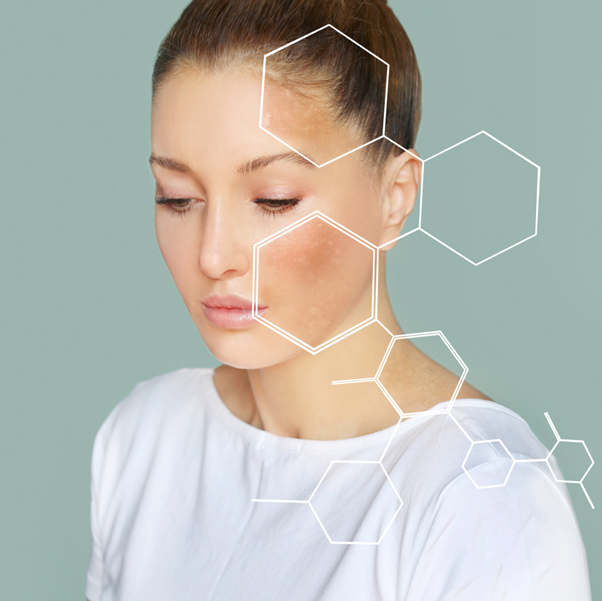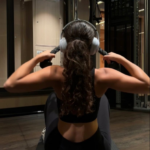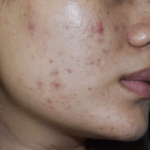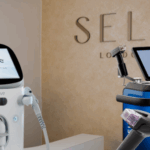
Laser skin resurfacing is one of the most effective treatments for improving skin quality. It can reduce wrinkles, soften acne scars, improve uneven texture,and reverse visible sun damage. Yet when patients begin to research resurfacing, they are quickly confronted with two terms: Erbium:YAG (2940 nm) and Carbon Dioxide (CO₂, 10,600 nm).
These are the two workhorse technologies in skin resurfacing. Patients often ask us which is better. The reality is that both can deliver powerful results, but they behave differently in the skin.
At Self London, we have deliberately built our resurfacing programme around advanced Erbium:YAG (Er:YAG) systems, including the Sciton Contour TRL for fully ablative resurfacing, Sciton ProFractional for fractional resurfacing, and UltraClear 2910 nm fibre laser for fractional resurfacing and laser coring. These platforms give us precision, safety and flexibility across all skin types.
This guide explains how these lasers work, what the differences mean in practice, and why modern Er:YAG technology is, in many cases, the safer and more versatile choice.
How does laser resurfacing work?
The skin is composed largely of water. Infrared resurfacing lasers target water as their main absorber (chromophore). When water molecules absorb the laser energy, they heat rapidly and the surrounding tissue vaporises. This is known as ablation.
The wavelength determines how strongly water absorbs the light and how deeply the energy penetrates before it is absorbed:
- High absorption (Er:YAG): extremely precise ablation with minimal heat spread.
- Lower absorption (CO₂): deeper penetration, broader heat zone, and longer recovery.
This efficiency of water absorption is at the heart of the comparison between Erbium:YAG and CO₂.
Er:YAG vs CO₂: the core differences
- Er:YAG (2940 nm): absorbed 10 times more efficiently by water than CO₂. Creates precise ablation with ~5-20 microns of residual heat (extendable to ~50 microns with controlled coagulation).
- CO₂ (10,600 nm): penetrates more deeply with ~100-150 microns of residual thermal damage. This broader thermal halo can stimulate collagen contraction but prolongs healing and increases pigmentation risk.
Clinical takeaway: Er:YAG offers faster healing and reduced pigmentation risk, while CO₂ carries more heat-related complications.
Which laser heals faster?
Healing depends on how much tissue is removed and how much heat remains.
- Er:YAG resurfacing: typically heals in 4-7 days, with redness resolving in 2-4 weeks.
- CO₂ resurfacing: often requires 7-14+ days, with redness persisting for months.
Faster healing with Er:YAG reduces downtime and lowers the risk of complications such as scarring or infection.
Is Er:YAG safer for darker skin types?
Yes; Er:YAG is safer for darker skin types. Post-inflammatory hyperpigmentation (PIH) is more likely when there is prolonged heat in the dermis. Because CO₂ creates a wider zone of residual damage, it carries a higher risk of PIH, particularly in Fitzpatrick skin types III–VI.
Er:YAG’s narrow thermal spread reduces this risk, making it a safer choice in London’s diverse patient population.
Does CO₂ give stronger results?
Historically, CO₂ was marketed as the “gold standard” because of its thermal tightening effect. However, modern Er:YAG systems allow controlled coagulation to be added when deeper collagen remodelling is needed.
This means Er:YAG can achieve the same degree of dermal remodelling and tightening as CO₂, but with the adaptability to prioritise faster healing when required.
How long do results last?
Both Er:YAG and CO₂ stimulate new collagen and elastin. Wrinkle reduction and scar improvement can persist for years. Maintenance resurfacing every 1-2 years helps sustain results, especially with ongoing sun exposure or natural ageing.
Er:YAG for acne scars
Fractional Er:YAG resurfacing is particularly effective for atrophic acne scars. Studies show significant improvements with high patient satisfaction and low rates of pigmentation change.
At our medical dermatology clinic on Harley Street, we often combine ProFractional Er:YAG with subcision, TCA CROSS, localised ablation, or UltraClear laser coring for tailored scar treatment.
Full-field vs fractional resurfacing
- Full-field resurfacing: affects the entire surface layer within the target area. Delivers dramatic improvement, especially for etched wrinkles, but requires longer healing.
- Fractional resurfacing: treats only a percentage of the skin in the target area, arranged in a grid of regularly-spaced points of ablation with bridges of intact tissue between. This shortens recovery and lowers risk, while still improving scars, pores and texture.
We offer both, allowing us to match treatment to each patient rather than a single fixed approach.
What does treatment feel like?
Most patients describe resurfacing as hot and sharp. Comfort is maintained with numbing cream, local anaesthetic injections, and cooling. Treatments may last 20 minutes for smaller areas or over an hour for full-face sessions.
Afterwards, the skin feels raw, similar to sunburn. Oozing and crusting are common in the first days, with new pink skin visible by the end of week one.
Aftercare essentials
- Gentle cleansing and healing ointments to support new skin
- Antiviral medication where needed (for patients prone to cold sores)
- Strict sun avoidance and high-factor sunscreen for several months
- Makeup once the skin is fully re-epithelialised
Risks: Er:YAG vs CO₂
All resurfacing carries risk of side-effects, including prolonged redness or swelling, pigment change, infection and, rarely, scarring.
- Er:YAG: lower risk of prolonged redness and pigmentation, especially in darker skin types.
- CO₂: higher risk of pigmentation changes and longer downtime.
Why Self London chooses Er:YAG
While CO₂ can be effective in expert hands, at Self London we focus on Er:YAG because:
- Its high water absorption allows precise ablation and faster healing.
- It carries a lower risk of pigmentation issues across a wider range of skin types.
- Modern systems allow coagulation for deeper remodelling without compromising safety.
- Our suite of Er:YAG technologies (Contour TRL, ProFractional, UltraClear) gives us unmatched flexibility to design personalised treatment plans.
Conclusion
Both Er:YAG and CO₂ are powerful resurfacing technologies. The key difference lies in how their energy is absorbed by water in the skin.
Er:YAG’s efficiency translates into precise ablation, faster healing and fewer pigmentary risks, while CO₂ produces more heat, giving early tightening but longer downtime. Modern Er:YAG platforms combine precision with adaptability, delivering results that are both effective and safe.
At Self London, advanced Er:YAG platforms form the foundation of our resurfacing practice, ensuring consultant-led care with safety and results at the forefront.
Frequently asked questions about Er:YAG vs CO₂ laser resurfacing
Which laser has less downtime?
Er:YAG heals in 4-7 days, with redness fading within weeks. CO₂ can take 7-14+ days, with redness lasting months.
Can Er:YAG deliver the same results as CO₂?
Yes. Modern Er:YAG systems can add controlled coagulation when needed, achieving similar outcomes but with more flexibility.
How long do resurfacing results last?
Both lasers stimulate long-lasting collagen. Results may persist for years, with maintenance every 1-2 years recommended.
Can Er:YAG treat acne scars?
Yes. Fractional Er:YAG is highly effective for acne scars, particularly when combined with subcision, TCA CROSS, or UltraClear laser coring.
Book your laser resurfacing consultation at Self London
At Self London, we use advanced Erbium:YAG systems including Contour TRL, ProFractional, and UltraClear. These platforms allow us to deliver precise, consultant-led resurfacing for wrinkles, scars and sun damage, with faster recovery and safer outcomes for all skin types.
Book your consultation today to explore how Erbium:YAG resurfacing can renew your skin safely and effectively.





